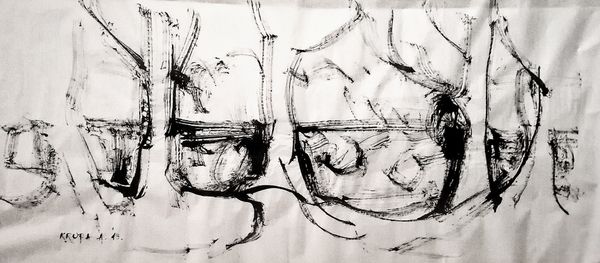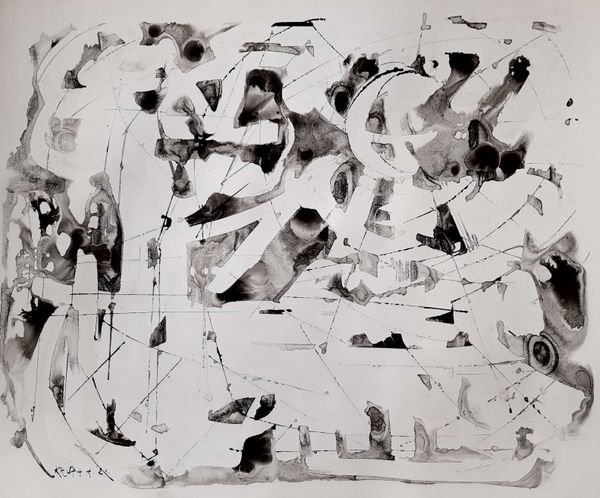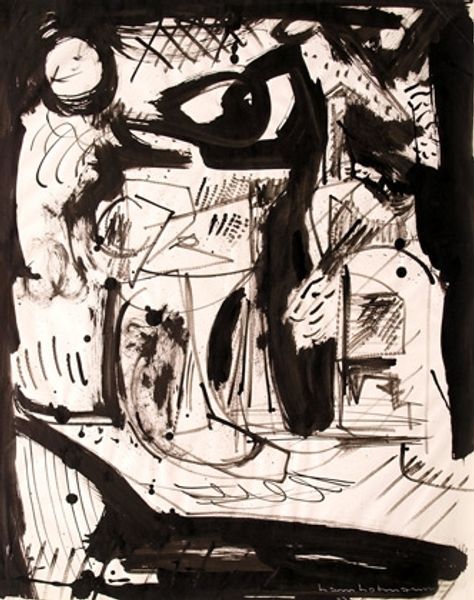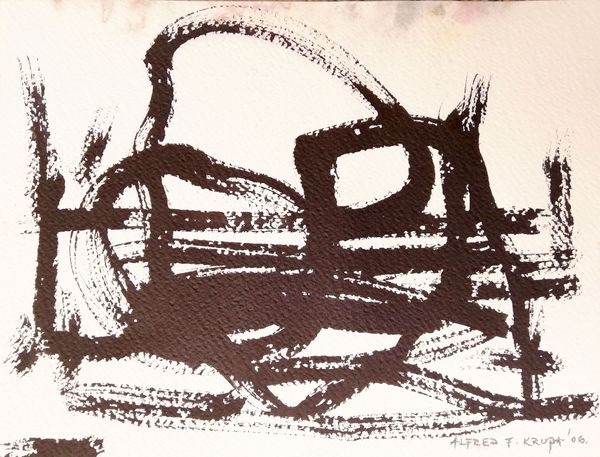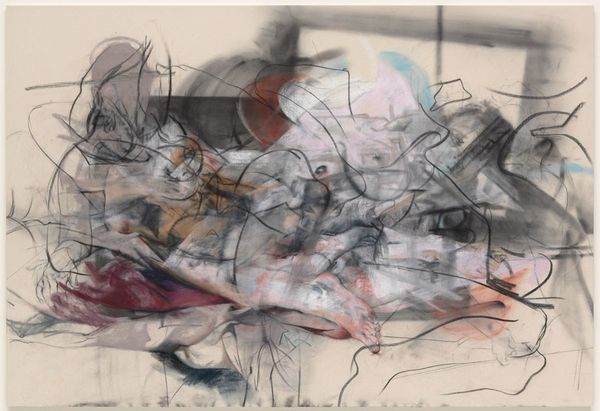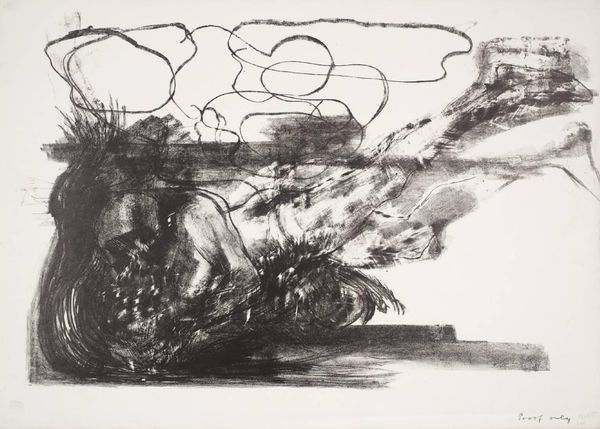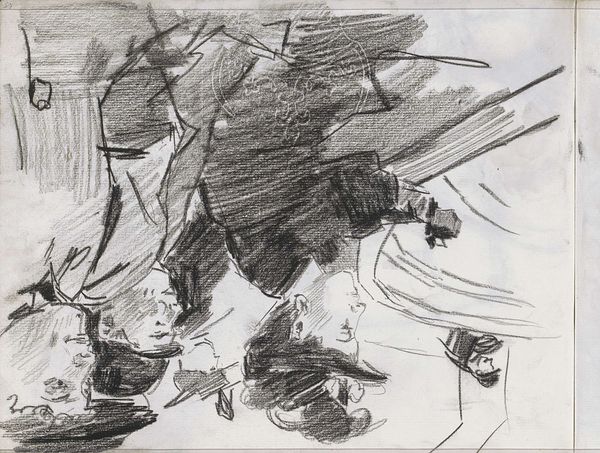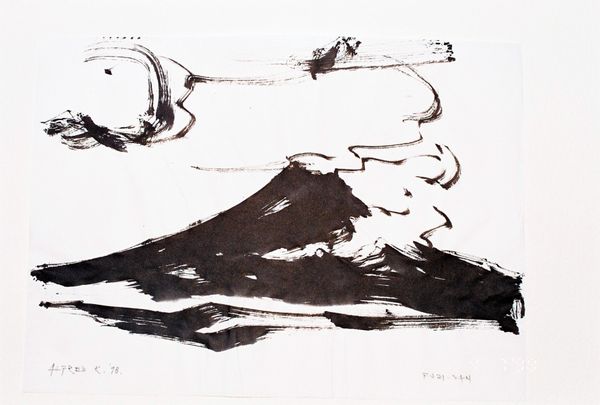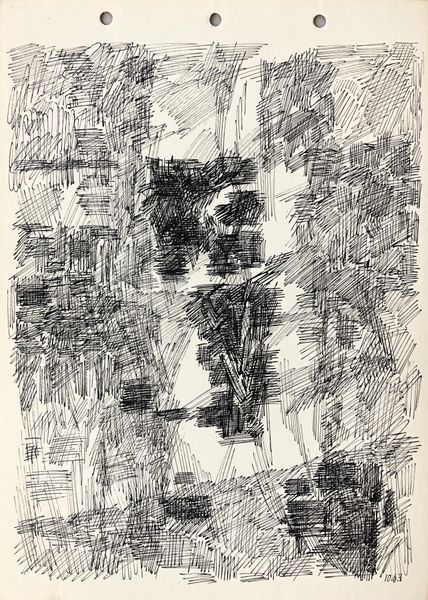
Copyright: Creative Commons NonCommercial
Curator: Let's discuss Alfred Freddy Krupa's 2021 ink drawing, “The Great White Egret feather drawing on the used wrapping paper." It strikes me with its bold use of line and the repurposing of the paper itself as part of the artistic statement. Editor: My first impression is one of energetic constraint. The composition feels like a contained explosion of black ink, swirling against the muted colors and faint typography of the paper underneath. The frenetic activity of mark making contrasts nicely with the more muted patterns of the paper. Curator: Exactly. Krupa, as I see it, challenges the canon of "high" art here through material intervention. It's a deliberate attempt to destabilize traditional hierarchies, to remind us of the economic realities underpinning artistic creation, in that artistic process and its effects is intimately intertwined with production and labor practices in contemporary societies. Editor: The act of drawing on used wrapping paper transforms a cast-off object into the foundation of an artwork. This really connects with our modern-day obsessions of consumption. Can you discuss how the use of these base materials, combined with expressive ink work, may signify something bigger within cultural and political contexts? Curator: The choice of support, ordinary wrapping paper already printed with “thank yous”, can be understood in the context of ecological awareness and consumer critique. Furthermore, the subject matter itself – an Egret feather - references nature but abstracted, not a simple realistic rendering, making nature itself as labor or commodification within global capitalism. So, what's your reading of its materiality, especially when contrasted with traditional fine art materials? Editor: For me, the artwork embodies the immediate physicality of the drawing act itself. The quick strokes, the ink bleeding into the paper fibers; it becomes a record of Krupa’s movement and intention. I see something too of Japanese sumi-e ink painting tradition in the artist's deliberate handling of tone, though filtered through the lens of modern abstract expressionism. Curator: I concur about the Eastern influences – these were prominent for abstract expressionists generally. Now, regarding those broader readings – do you believe our focus on material also shapes the viewing public’s reception of such politically engaged art? Editor: Undeniably, when viewers contemplate process and substance, it deepens engagement beyond just aesthetics. In my view, understanding the social life of objects helps unravel layered artistic meaning and intentions behind it. Curator: And it brings attention to a wider network of social production inherent in all aesthetic activity, right? Very good point. Thinking about our own biases and historical lenses in art history… that is really a job for ongoing analysis and revision. Editor: Agreed. By spotlighting materiality alongside subject matter, we facilitate access to dialogues on power dynamics ingrained within artworks and societies shaping them.
Comments
No comments
Be the first to comment and join the conversation on the ultimate creative platform.
